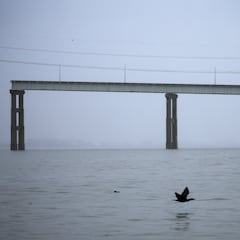How big is the crane that is lifting the wreckage from the Baltimore bridge collapse?
The monumental task of clearing the wreckage from the collapsed Francis Scott Key Bridge in Baltimore has begun.


A massive crane, boasting a lifting capacity of 1,000 tons, arrived at the site of the Baltimore bridge collapse, marking a significant step towards restoring the vital transportation artery.
This behemoth, known as the Chesapeake 1000, is the largest crane currently on the Eastern Seaboard. Its arrival signifies the immense scale of the cleanup operation. The collapsed bridge, along with the cargo ship that collided with it, present a complex challenge for recovery teams.
Cranes start removing wreckage from deadly Baltimore bridge collapsehttps://t.co/V7QkQKcy0s pic.twitter.com/i98szcBQe2
— TIME (@TIME) March 29, 2024
“This is an incredibly complex job, and our timeline will be long,” Maryland Gov. Wes Moore said. “We’ve got work to do, but we’re moving.”
What is the Chesapeake 1000?
The 1,000-ton lifting capacity allows the Chesapeake 1000 to grapple with the heaviest debris from the bridge and the ship. This includes large sections of concrete, twisted steel beams, and potentially even the entire cargo hold of the vessel, depending on the extent of the damage.
To put that in perspective, 1,000 tons is equivalent to the weight of roughly 20 blue whales or 1,600 fully loaded cars.
Related stories
“I want to be clear, this work will not take hours. This work will not take days. This work will not just take weeks,” Moore continued. “We have a very long road ahead of us.”
While the Chesapeake 1000 is the headliner, it’s not working alone. Reports indicate a second, 400-ton crane will also be deployed to assist in the cleanup effort. This coordinated approach will expedite the removal of debris and allow for a faster reopening of the bridge, a crucial link in Baltimore’s transportation network.

